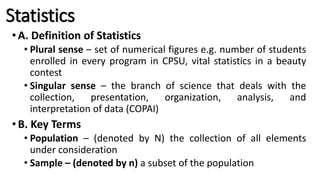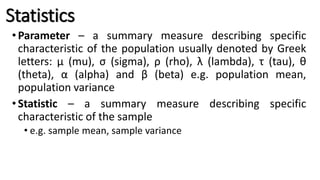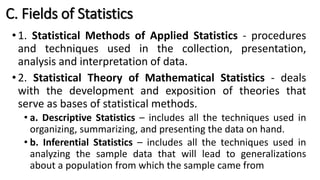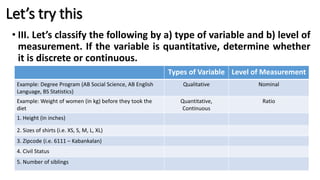Statistics is the study of collecting, organizing, summarizing, and interpreting data. It involves defining populations and samples, variables and observations, parameters and statistics. There are two main fields - descriptive statistics which summarizes data, and inferential statistics which analyzes samples to generalize to populations. Variables can be qualitative like gender or quantitative like height. Quantitative variables can be discrete like number of siblings or continuous like weight. Measurement scales range from nominal to ratio levels.




























